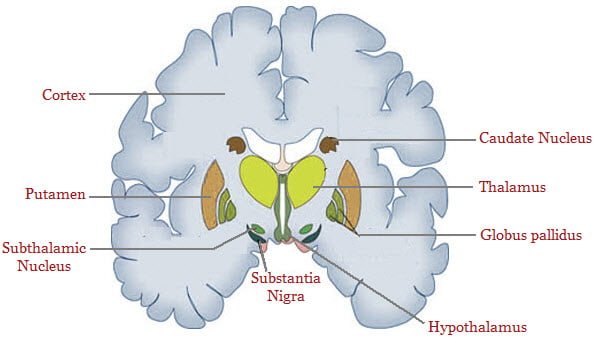TABLE OF CONTENTS
Basal ganglia
Basal ganglia is situated deep within the cerebral hemisphere as sub cortical gray matter with large masses of nerve cells.

This acts as a part of the motor cortex in birds in which the motor cortex is poorly developed. It has corpus striatum (striated body), globus pallidus (pallidum) and the amygdala. It receives fibres from cortex to striatum, from striatum to pallidus, from pallidus to thalamus and from thalamus to all areas of cortex.
Functions of Basal Ganglia
The basal ganglia receives inputs from the sensory, motor and association areas of the cerebral cortex and cooperates in pre-programming of somatic muscle activity in voluntary motor activation.
Integrates feeling and movement. Shifts and smooths a fine motor behaviour.
Suppresses unwanted motor behaviours and forms over all control of voluntary movements to establish posture. Diseased structure causes involuntary jerky movements.
In birds, the basal ganglia perform all the motor function, including the voluntary movements. In dog and cat, removal of cortex abolishes the discrete type of motor functions.